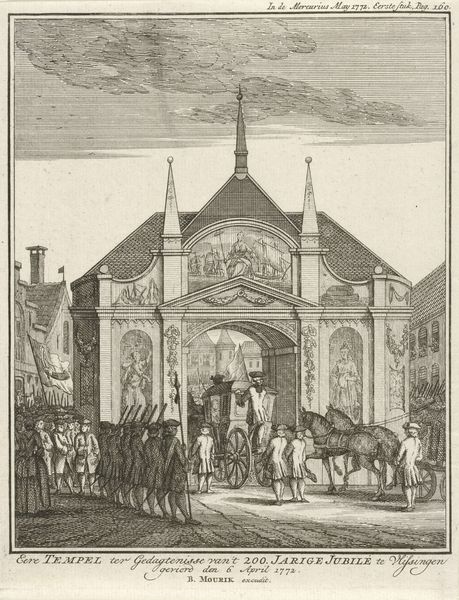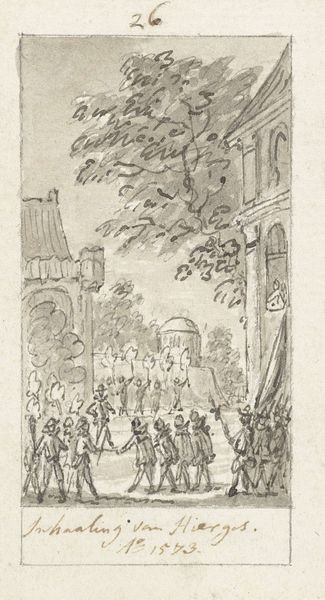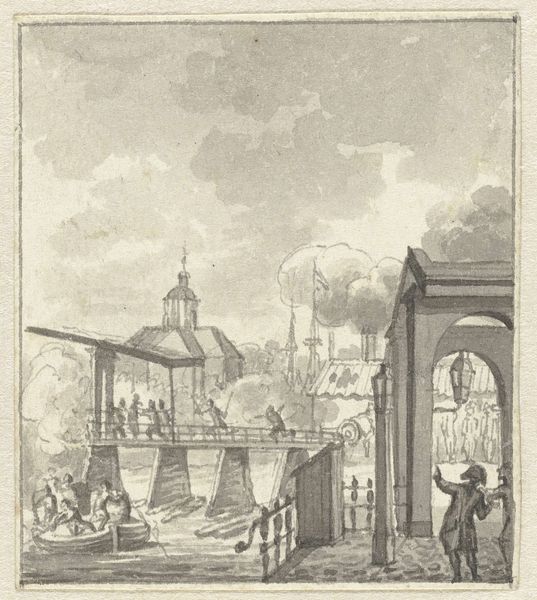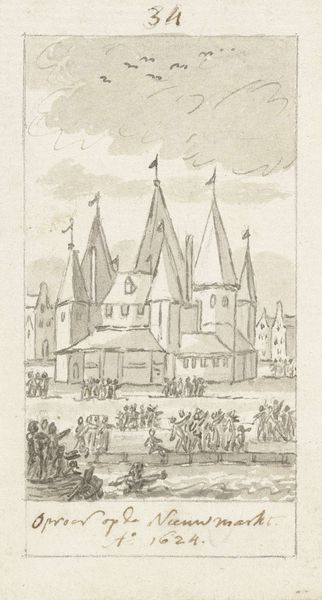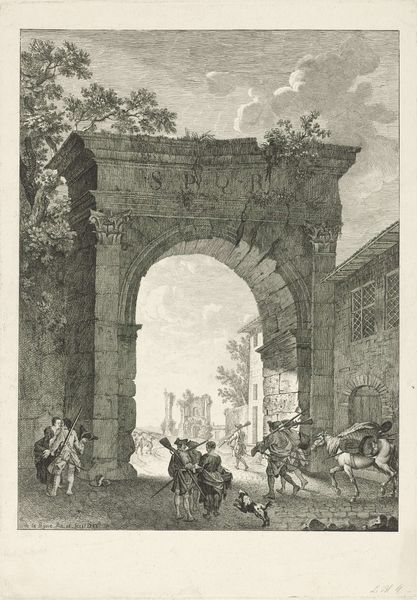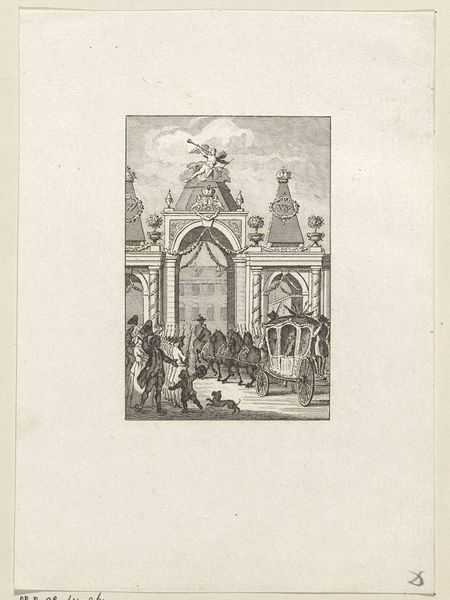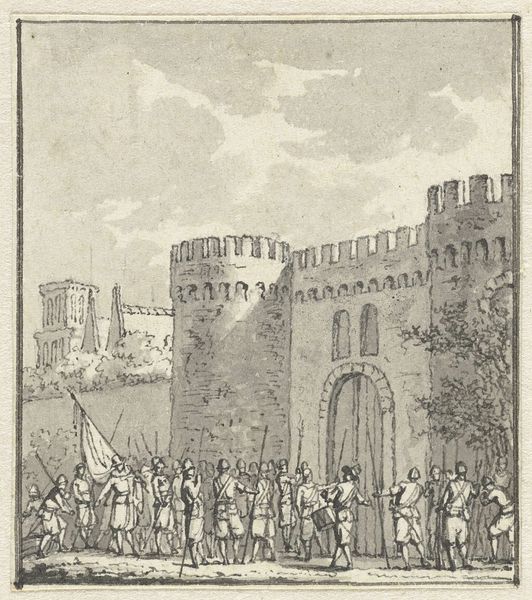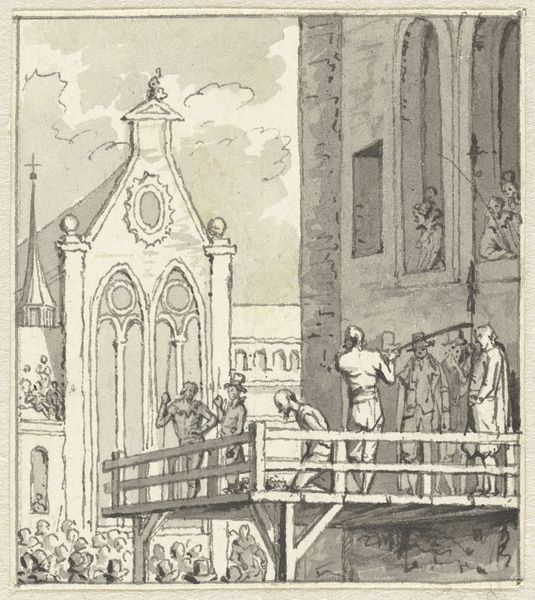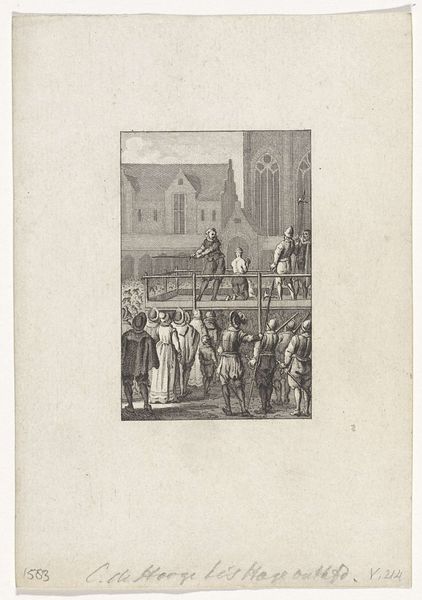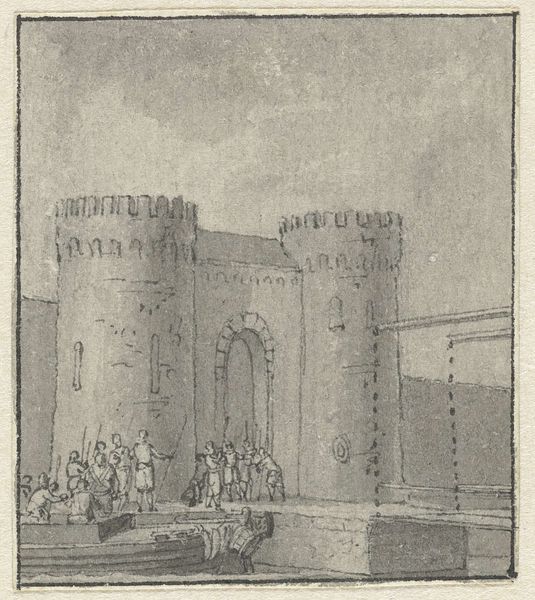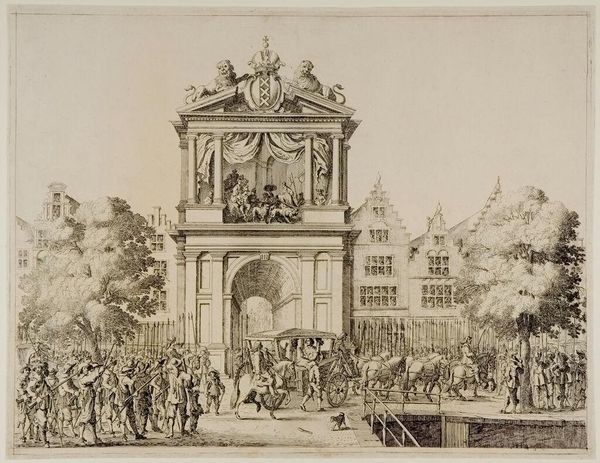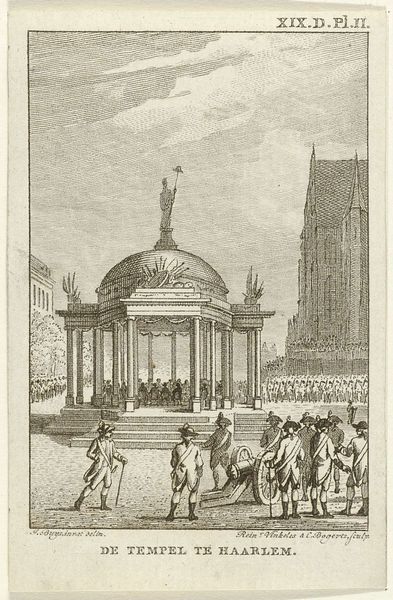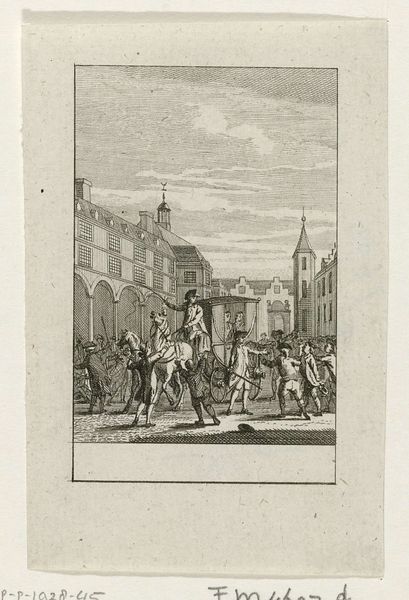
De tempel te Vlissingen, opgericht ter gelegenheid van het tweede eeuwfeest van de bevrijding, 6 april 1772 Possibly 1772 - 1801
0:00
0:00
drawing, ink
#
drawing
#
neoclacissism
#
landscape
#
ink
#
cityscape
#
genre-painting
Dimensions: height 82 mm, width 56 mm
Copyright: Rijks Museum: Open Domain
Curator: This ink and wash drawing, attributed to Jacobus Buys, possibly made between 1772 and 1801, depicts the temple erected in Vlissingen for the bicentennial celebration of liberation. Editor: My immediate impression is of understated civic pride rendered in quite humble materials. Look at that grey wash—almost austere. Curator: The drawing's restraint reflects Neoclassical ideals—proportion, order, and civic virtue—very fashionable in the Netherlands at the time. The triumphal arch is interesting because it evokes Roman antiquity as filtered through Dutch aspirations. Editor: What strikes me is that the Neoclassical style seems somewhat at odds with the seemingly mundane, workaday world shown here. Notice the rendering of the figures—their costumes, the two dogs running free. It speaks to the daily lived experience. Curator: Indeed, there is a deliberate insertion of genre elements here. It’s not simply idealised form; there is also a deliberate injection of lived reality into the composition, grounding the symbolic importance in the present. Do you notice the figures parading with flags? That's very Dutch in sentiment, connecting freedom with the daily life. Editor: What I find appealing is how Buys deploys these common, widely available materials to picture an extraordinary civic monument, which itself, by all accounts, was quite ephemeral. It invites you to consider all the labour involved. Curator: Ultimately, Buys’ image does more than simply capture a moment. It speaks to continuity and to values. That monument itself was a projection of those ideals, and this drawing continues that projection for future generations. Editor: Precisely. The work reminds me of how material objects can carry such significant social meaning, if only we observe closely their production and what stories they conceal.
Comments
No comments
Be the first to comment and join the conversation on the ultimate creative platform.
